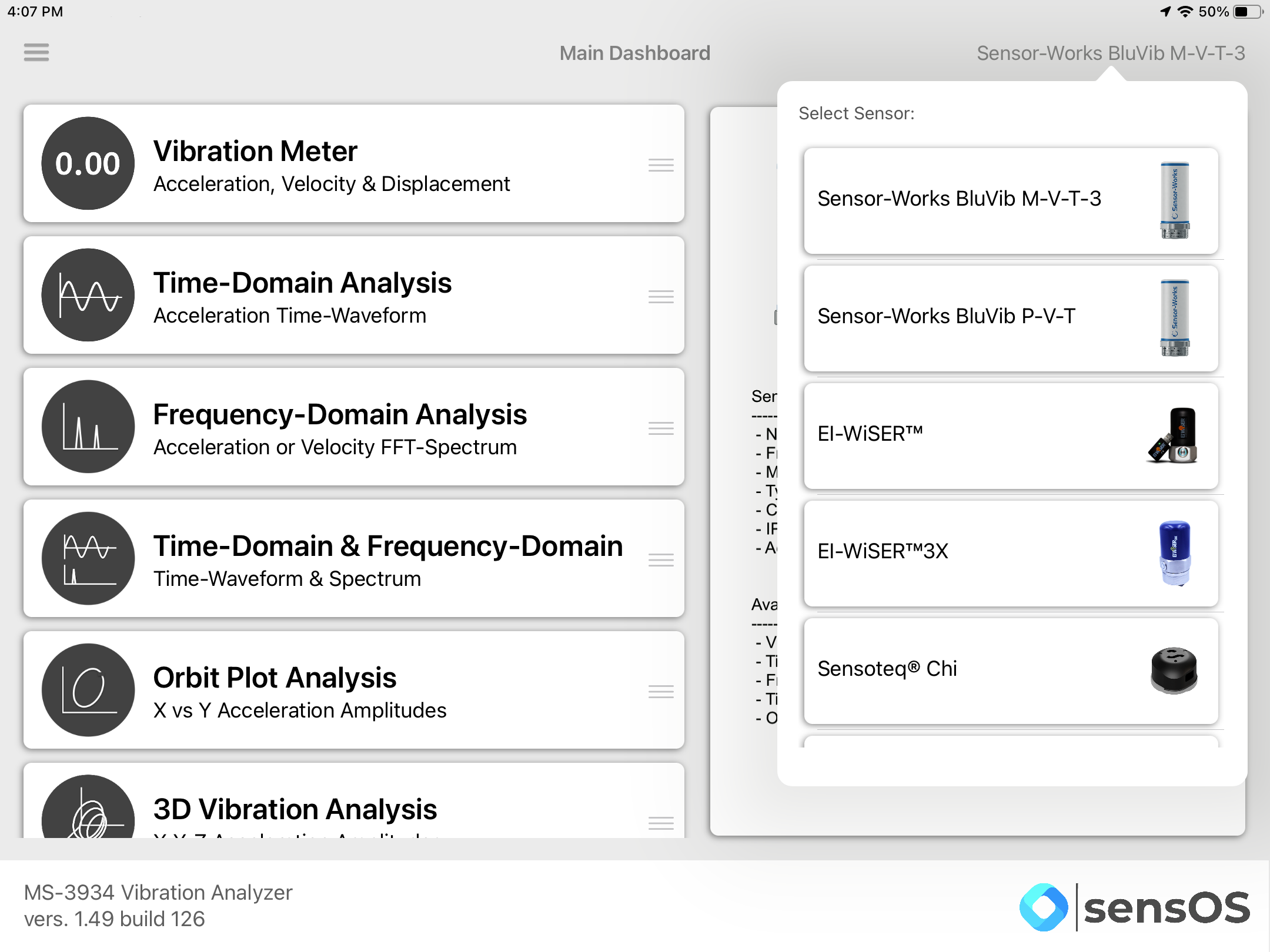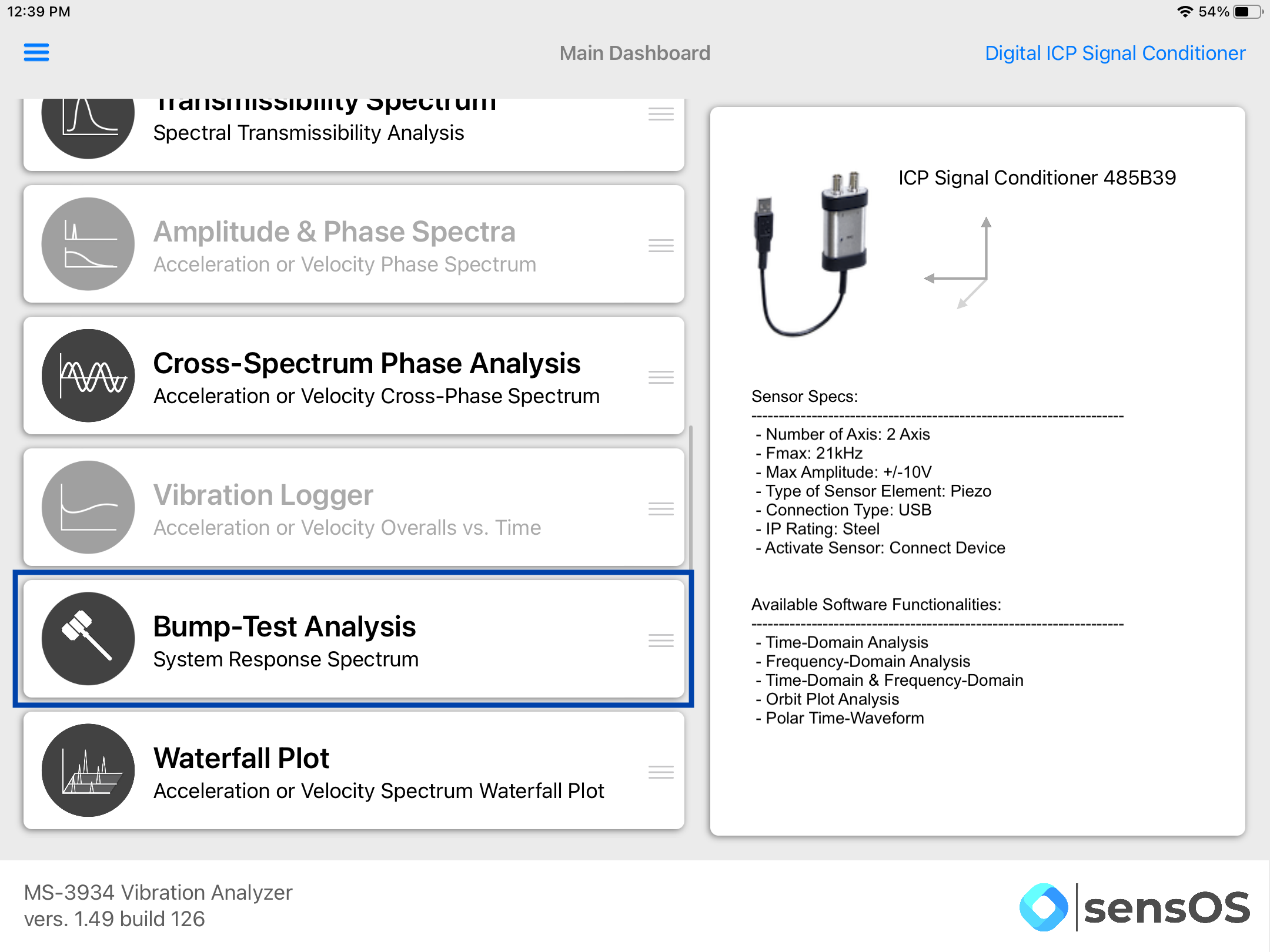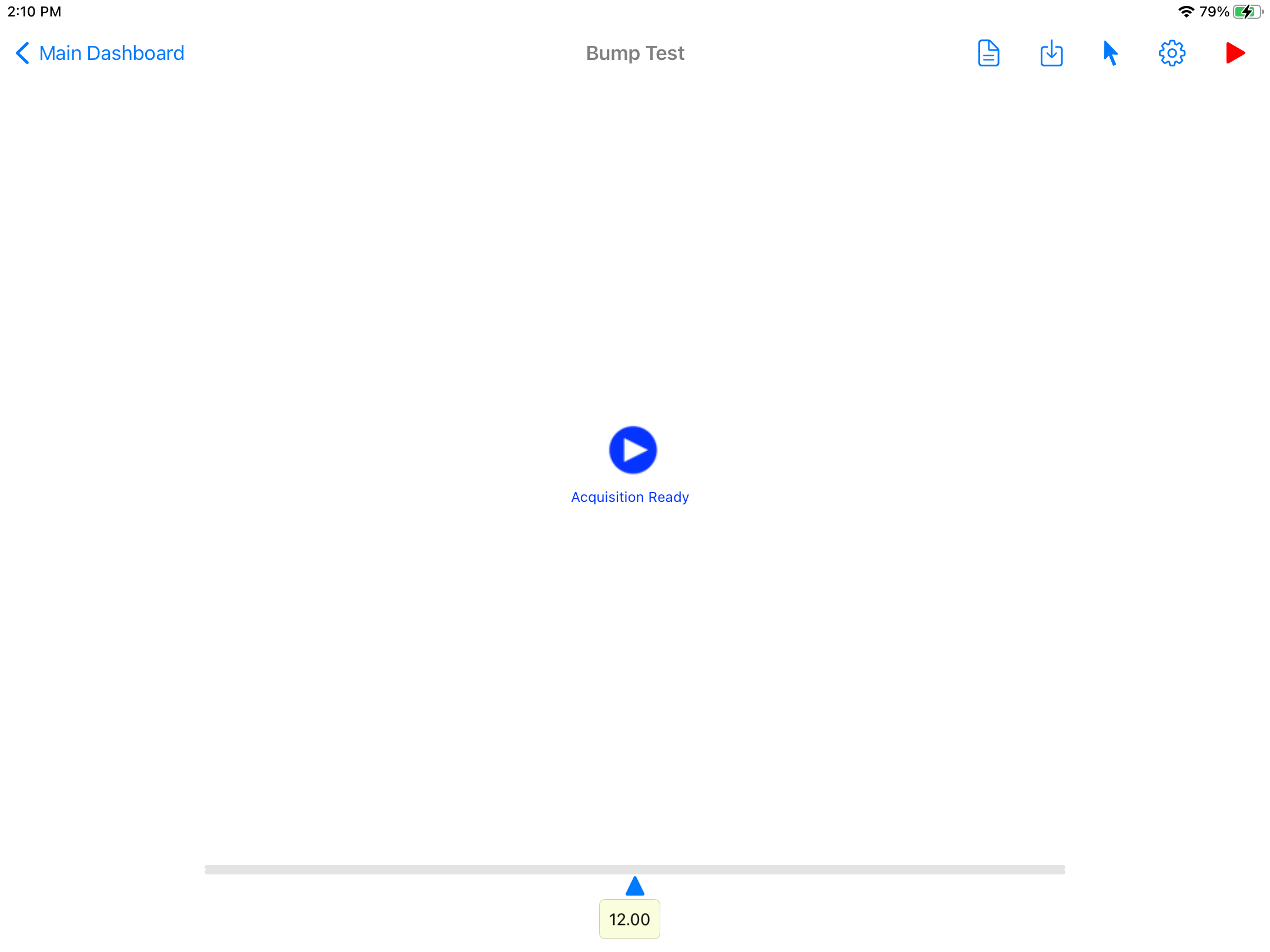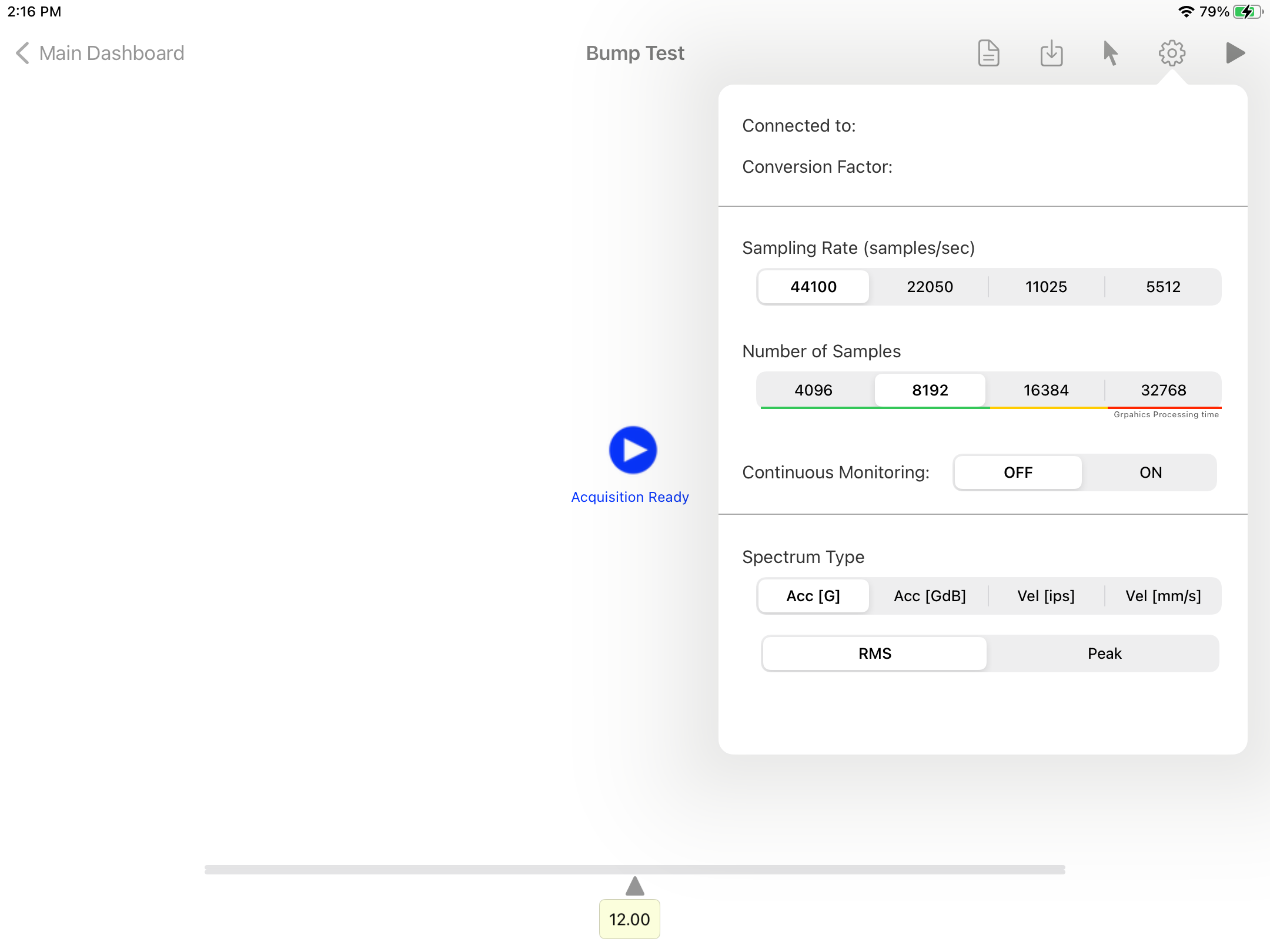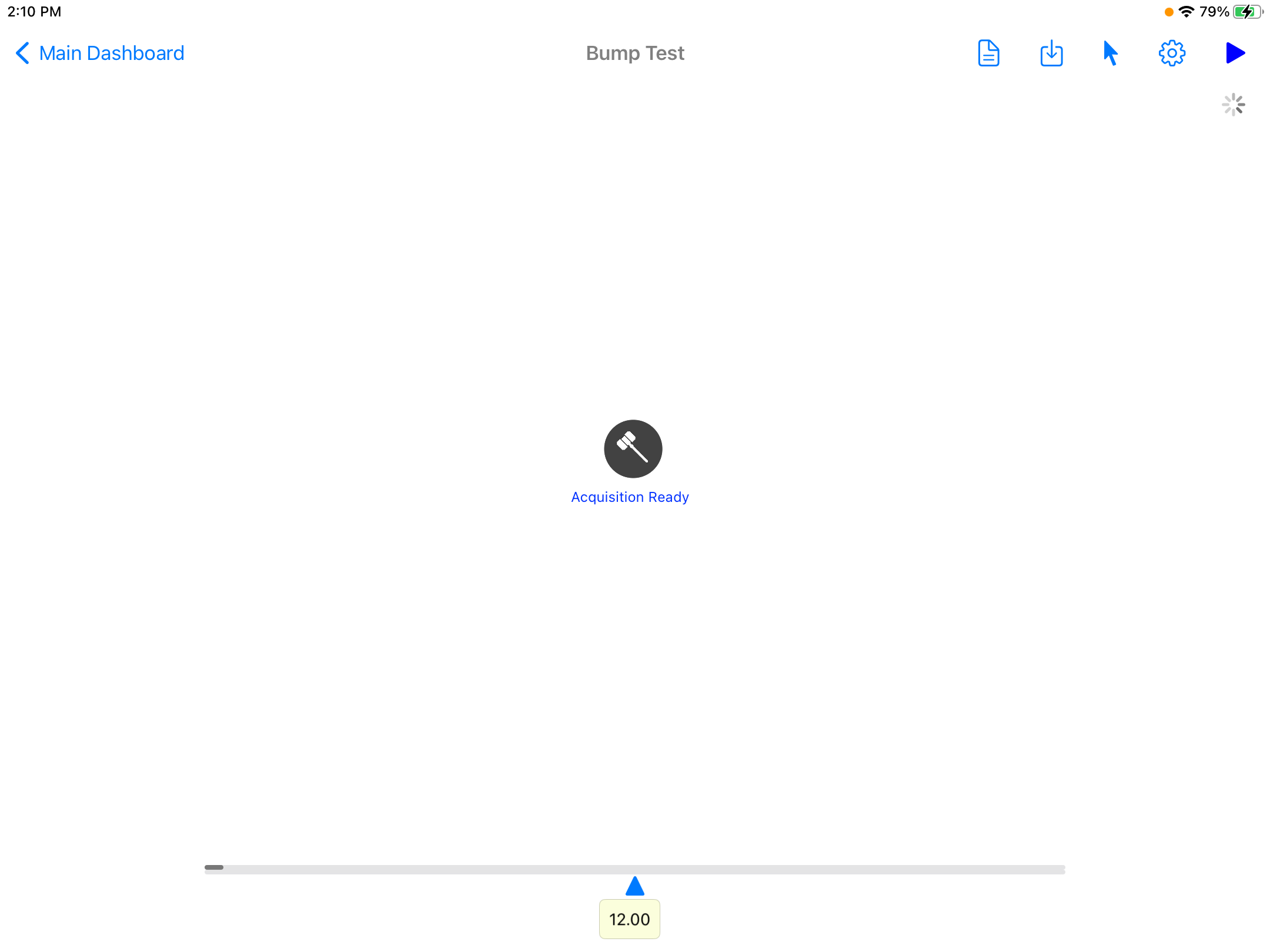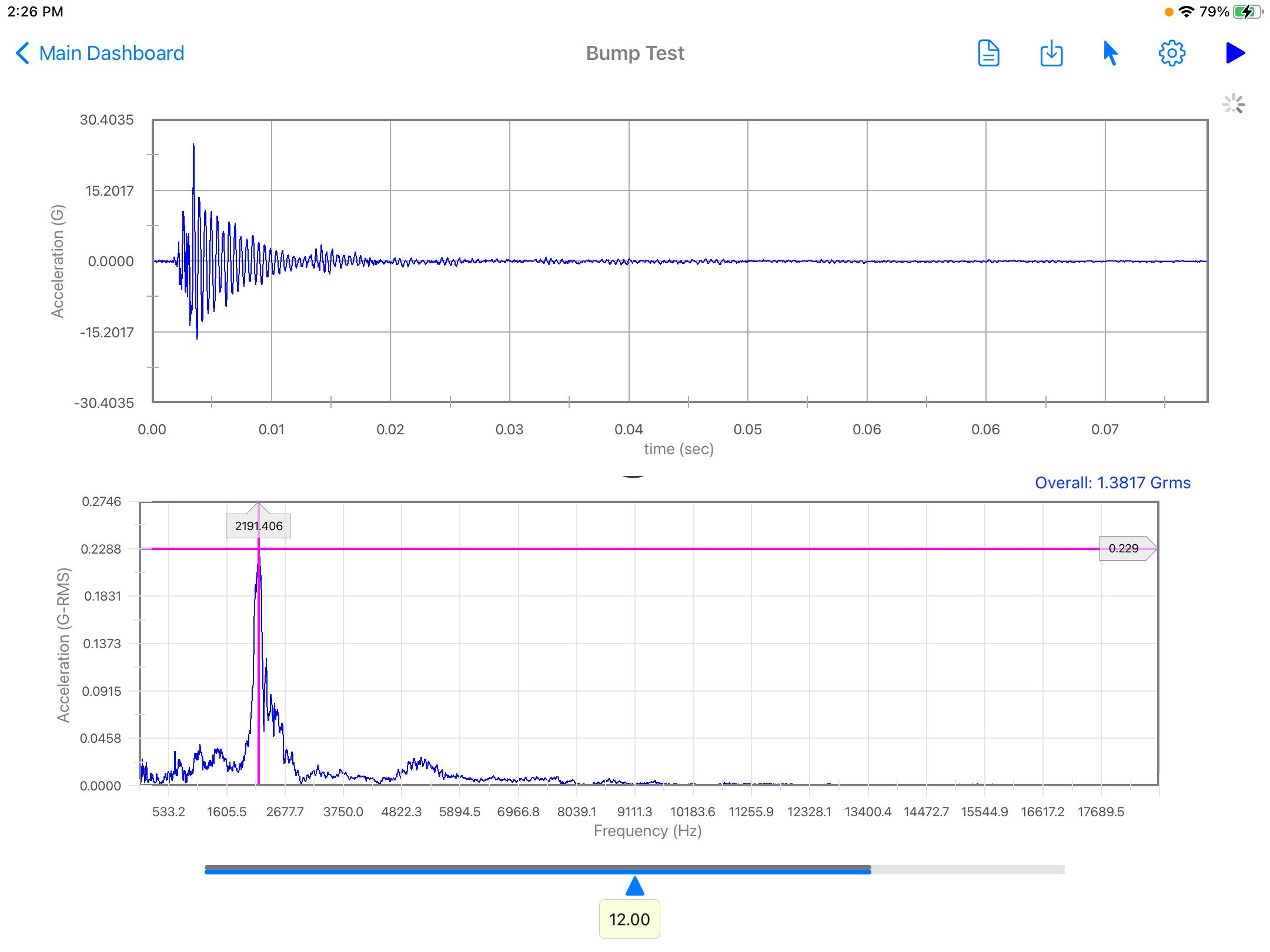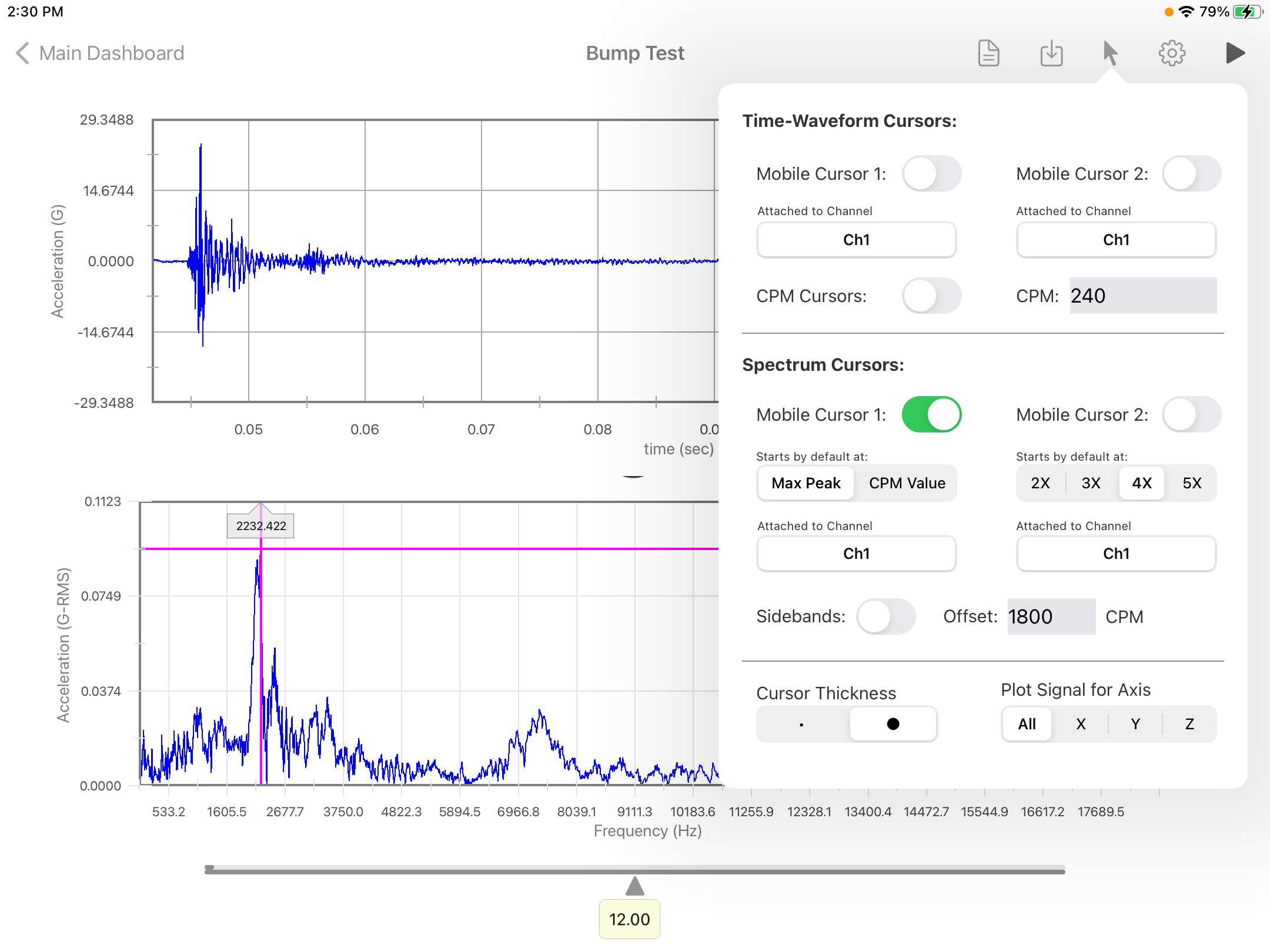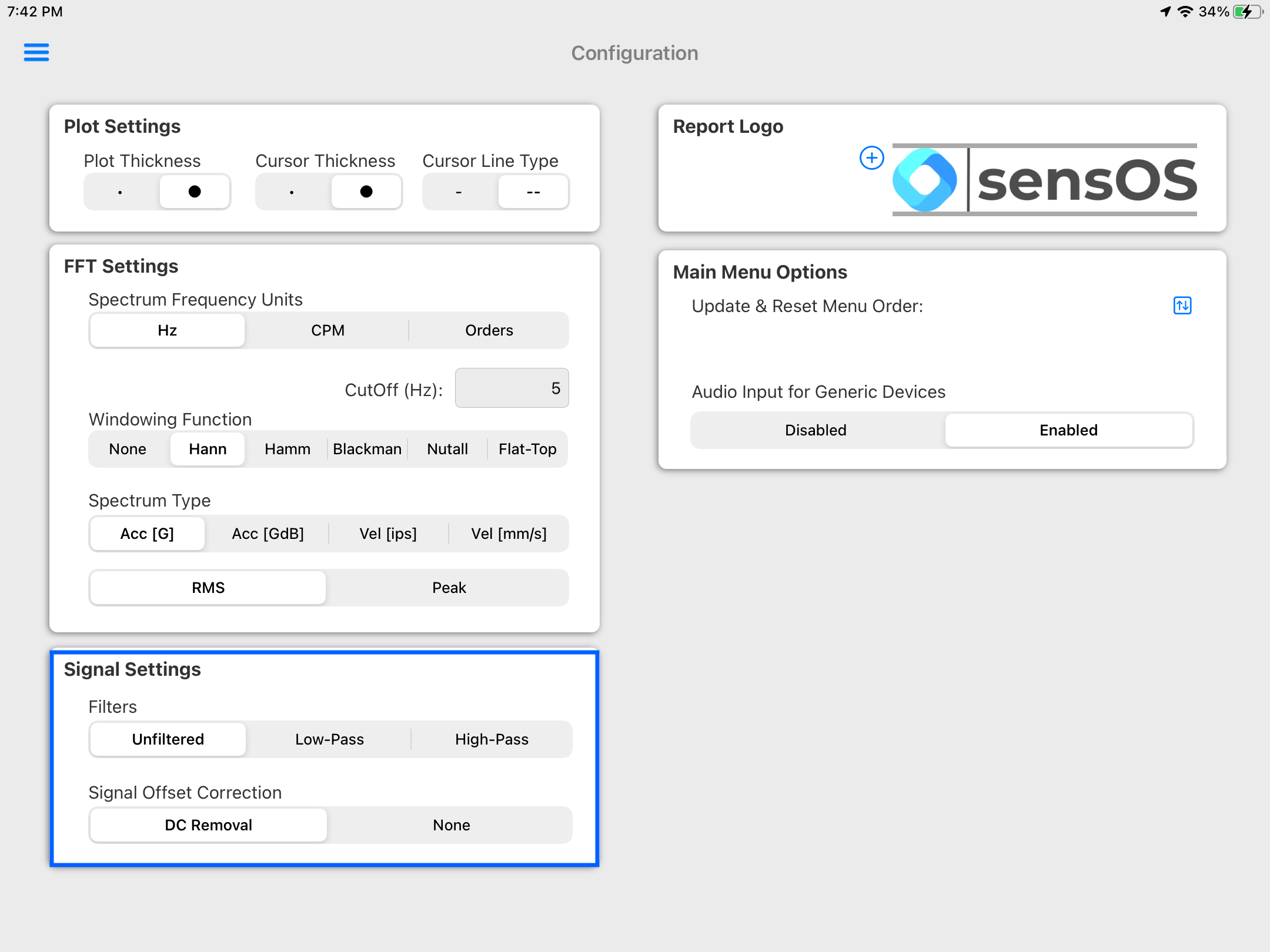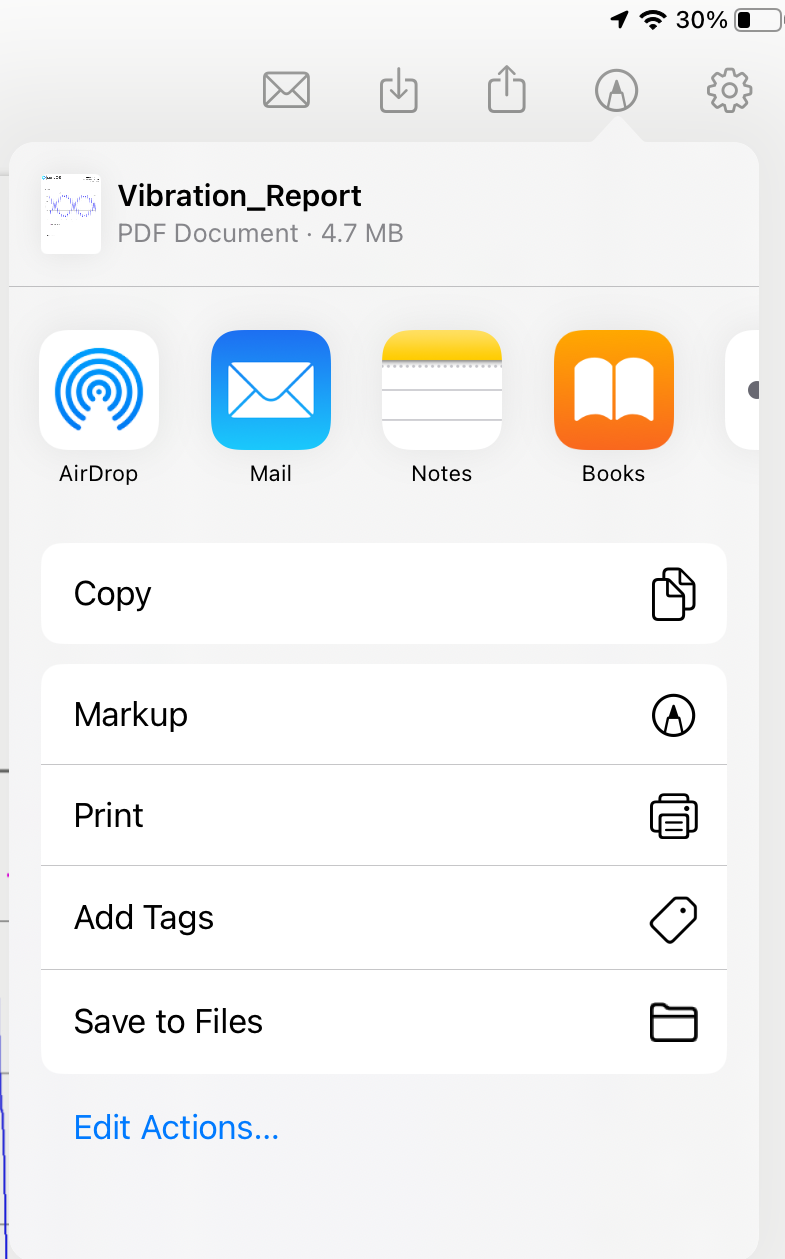Documentation
3934 Bump Test
MS-3934: Vibration Analysis Studio iPadOS® version
- Version: 1.49 (b.126)
- Author: D. Bukowitz
- Created: 04 Oct, 2021
- Update: 21 Nov, 2022
If you have any questions that are beyond the scope of this document, Please feel free to email via info@sens-os.com
Description
The impact test module requires an accelerometer signal and a trigger signal (accelerometer or impact hammer), to acquire the vibration response produced by the impact excitation. The bump test user iterface provides a slider indicator to measure and set the trigger level, then the response can be analyzed in a time-domain plot and a frequency-domain plot.
Compatibility
This module is compatible with the following sensors:
- Digital ICP Signal Conditiones (2 Axis)
Main Menu
- Tap on the Sensor name button to open the list of available sensors, and select the sensor type from the list
- Scroll the list of functionalities and select Bump Test
Note: The user can change the order of the functionalities in the list by dragging it from the right button on each cell
Bump Test
- After connecting the sensor, The start ► button will be enabled as shown below.
- The user can change the sampling settings opening the settings pop-up. Other options such as windowing, filtering and cut-off value can be modified in the general Configuration view. See Configuration for more details.
- To activate the bump-test mode press the start ► button (top bar start boton will change from red to blue). This will activate the listener mode. Once an impact is producer the level bar will show the intensity and will only trigger the measurmeent if the value is above the set point. The set point can be changed by tapping on the yellow field below the level bar.
- Once the trigger value is exceeded the module will plot the vibration response. The user can zoom the plots by using both fingers to pinch in and out, to pan use one finger and swipe left or right.
- The cursors pop-up will allow the user to add manual cursors, differential cursors and/or the CPM cycle cursor to the time-waveform and manual cursors and differential cursors to the spectrum plot.
- A full pdf report can be generated, saved or sent by clicking on the report button, see more info in: Generating a pdf Report.
Configuration
- From the Main menu, click the top left menu button to open the left drawer with more options. Select 'Configuration' from the left menu
- The Signal Settings will affect the raw data directly. The DC-Removal is ON by default by can be turned OFF here. Also a general Low-Pass or High_pass filter can be applied to the signal.
- The FFT Settings will be set as defaults for all readings. Here the user can change the spectrum frequency units to Hz, CPM or Orders. A Cut-Off value can be added to remove low frequency values. Also windowing can be selected for the spectrum, the available options are: None, Hanning, Hamming, Blackman, Nutall and Flat-Top. The spectrum type and RMS/Pk values can be set as defaults here, but can also be changed in the settings pop-up of the spectrum.
Note: This selection will affect all reading's raw data for all modules
Report
- Clicking on the Report button will open a new view with the pdf report. The report view contains several options in the top bar menu: 1:Send by Email, 2:Save pdf locally, 3:Upload Report to the Cloud bucket, 4:Markup and 5:Report Configuration
- The markup tool allows the user to copy the report to the clipboard, send it by Airdrop or any other messaging app, email it, print it or saved it to Files. The markup tool will open the standard tool to paint on the pdf report.
- The Report Configuration pop-up allows the user to enter the Report Title, Machine ID and Notes to be added to the report. Here the user can also select a logo for the report and include a picture of the asset that will be added in a new page in the report. The report file name be default is the actual date and time, but the user can change it to the title name of the report or to both, the title name and date.
Changelog
See what's new added, changed, fixed, improved or updated in the latest versions.
Version 1.49 b.126 (21 Nov, 2022)
- Optimized Optimized for iPadOS 16
Version 1.18 b.79 (04 Oct, 2021)
Initial Release
